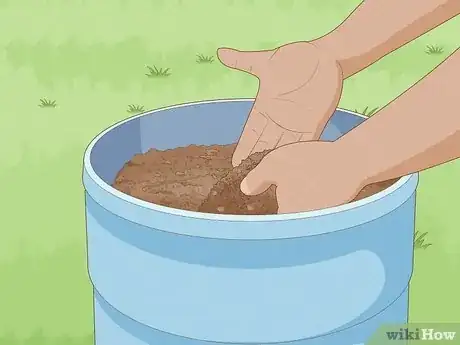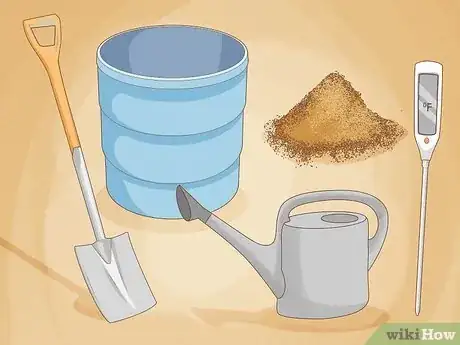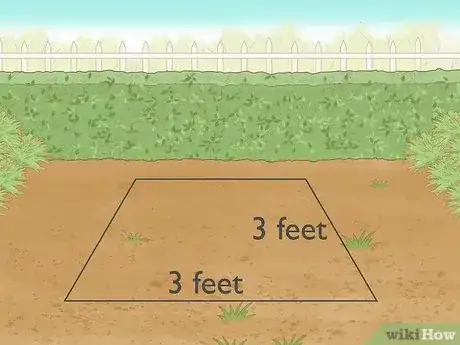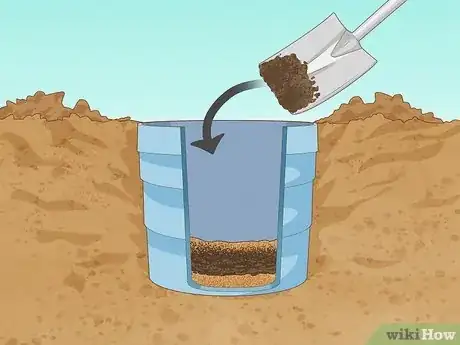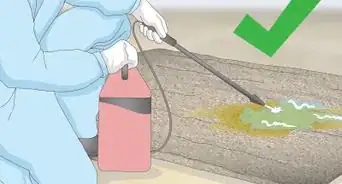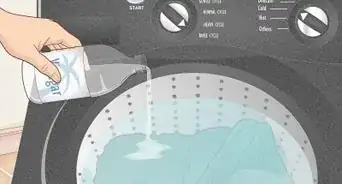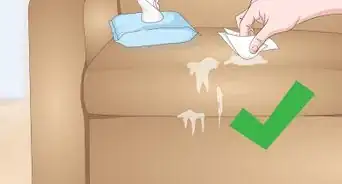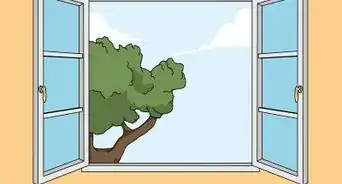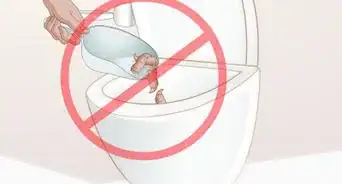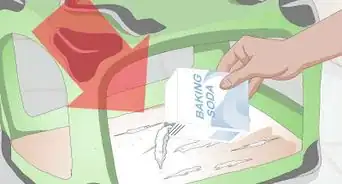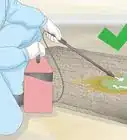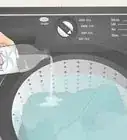This article was co-authored by Pippa Elliott, MRCVS. Dr. Elliott, BVMS, MRCVS is a veterinarian with over 30 years of experience in veterinary surgery and companion animal practice. She graduated from the University of Glasgow in 1987 with a degree in veterinary medicine and surgery. She has worked at the same animal clinic in her hometown for over 20 years.
This article has been viewed 26,653 times.
Many people are familiar with composting as a way to reduce yard waste while creating an important product for gardening. However, many people believe that it’s a dangerous thing to compost dog poop or waste. This is not the case. It has been found that as long as certain precautions are followed, dog poop can be composted successfully and safely.[1]
Steps
Prepping the Compost Area
-
1Decide to start composting. Simply put, composting is the process of taking organic (living or once-living material) material and breaking it down into a nutrient rich soil additive. This great soil additive has valuable nutrients that help plants to grow.[2]
- When composting you take a natural process and speed it up by using heat, aeration (adding oxygen), and moisture.[3] Bacteria, fungi, molds, earthworms, insects, and other soil organisms break the compost materials down into a useful material.[4]
- Compost consists of both dry and moist materials. The moist materials are those that have a high nitrogen content, like manure, food waste, or grass clippings, and dry materials are materials that have a high carbon content, like dried leaves, straw, or sawdust.[5] These items need to be mixed in a specific ratio in order to make good compost.
-
2Gather materials. You will need a container to keep your compost in. This can be a commercial compost bin or simply bricks or concrete blocks to contain the pile. You will also need a shovel or garden spade, a long stemmed thermometer (which can be found at hardware stores), a carbon source (such as sawdust), and access to a hose or watering can.Advertisement
-
3Create an area where you will compost. It would be best to use a far corner of your yard to keep it out of the way of animals or children. You will need a yard site that is at least 3 feet by 3 feet.
- If you are building your own compost container, use the bricks or concrete blocks to outline the area you’ve chosen.
- Make sure it isn’t under building eaves where a lot of water could run into it.
Composting Dog Waste Safely
-
1Layer the compost pile. Place a 3 inch layer of sawdust on the bottom of the area. Next put in the dog poop. Then place a 1 inch layer of sawdust over the dog poop, along with a shovelful of dirt.
- Mix this together and cover with another layer of sawdust.
- You will have to use your judgement but the correct ratio is 2 parts dog poop to 1 part sawdust.[6]
-
2Sprinkle the pile with water until the first layer is moistened. Do not soak it totally but the pile needs to be moist. The organisms that break down the dog poop need moisture to function.[7]
- Then put the thermometer deep into the pile, making sure not to go into the ground. Record the temperature on your calendar.
-
3Care for your compost pile weekly. You will need to take your shovel or spade and “turn” the pile (mix it up) once a week. This will assure that it is properly aerated and that all the material is decomposing evenly.
- Also take weekly temperature readings (before turning) and record. The target number is 140 ° F. This will generally be reached in 4-8 weeks, when the waste and sawdust has turned into a material that looks much like soil.[8]
-
4Use the compost appropriately. Do not use this compost on any plants or shrubs you use for food. It cannot be certain that dog poop compost is safe for use on fruit or vegetable plants.[9]
Warnings
- Always wash your hands and tools after working on the pile and when you use it after it has been composted.⧼thumbs_response⧽
- Keep children away from the compost pile until it is properly composted.⧼thumbs_response⧽
References
- ↑ http://sarasota.ifas.ufl.edu/compost-info/tutorial/dog-waste.shtml
- ↑ http://www.recycleworks.org/compost/
- ↑ http://sarasota.ifas.ufl.edu/compost-info/tutorial/elements-of-composting.shtml
- ↑ http://www.mass.gov/eea/agencies/massdep/recycle/reduce/composting-yard-and-food-waste.html
- ↑ http://www.mass.gov/eea/agencies/massdep/recycle/reduce/composting-yard-and-food-waste.html
- ↑ http://sarasota.ifas.ufl.edu/compost-info/tutorial/dog-waste.shtml
- ↑ http://www.mass.gov/eea/agencies/massdep/recycle/reduce/composting-yard-and-food-waste.html
- ↑ http://sarasota.ifas.ufl.edu/compost-info/tutorial/dog-waste.shtml
- ↑ http://sarasota.ifas.ufl.edu/compost-info/tutorial/dog-waste.shtml
